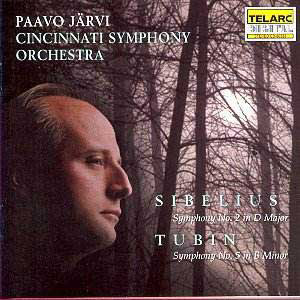|
|
Search MusicWeb Here |
|
 |
||
|
Founder:
Len Mullenger (1942-2025) Editor
in Chief:John Quinn
|
|
|
Search MusicWeb Here |
|
 |
||
|
Founder:
Len Mullenger (1942-2025) Editor
in Chief:John Quinn
|
 |
Jean SIBELIUS (1865-1957) |
|
|
|
When the roll-call of audacious classical CD companies is taken Telarc will be there in the line-up. They merit their place not least for their Szymanowski and Hartmann recordings. This disc is in the same vein. True to market imperatives we have Sibelius's Second Symphony but also in there is Eduard Tubin's Fifth Symphony. Both works have been recorded by Neeme Järvi, Paavo's father. While the catalogues heave and strain with alternative versions of the Sibelius, the Tubin is accessible in only two alternative versions, one by Volmer (Alba) and the other on Bis (the original 1980s Tubin cycle conducted by Neeme Järvi). |
|
Return to Index |